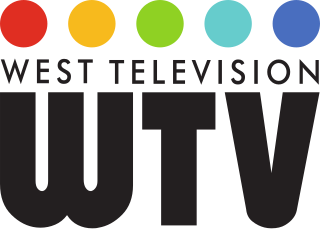
The Special Broadcasting Service (SBS) is an Australian hybrid-funded public service broadcaster. About 80 percent of funding for the company is derived from the Australian Government. SBS operates six TV channels and seven radio networks.

Television broadcasting in Australia began officially on 16 September 1956, with the opening of TCN-9, quickly followed by national and commercial stations in Sydney and Melbourne, all these being in 625-line black and white. The commencement date was designed so as to provide coverage of the Olympic Games in Melbourne. It has now grown to be a nationwide system that includes a broad range of public, commercial, community, subscription, narrowcast, and amateur stations.
Public broadcasting, sometimes public service broadcasting, is not subject to political interference or commercial influence.

Network 10 is an Australian commercial television network owned by Ten Network Holdings, a division of the Paramount Networks UK & Australia subsidiary of Paramount Global. One of five national free-to-air networks, 10's owned-and-operated stations can be found in the state capital cities of Sydney, Melbourne, Brisbane, Adelaide and Perth while affiliates extend the network to regional areas of the country.

TVW is a television station broadcasting in Perth, Western Australia, wholly owned by Seven West Media. It was the first television station in Western Australia, commencing broadcasting on 16 October 1959. It broadcasts a modulated 64-QAM signal of five DVB channels. The primary channel was available as a PAL-B modulated simulcast on VHF channel 7 at 182.25 MHz before being discontinued in the first half of 2013; it had been the station's primary signal since its inception. The TVW callsign stands for TV (Television) Western Australia.

Television in Australia began experimentally as early as 1929 in Melbourne with radio stations 3DB and 3UZ, and 2UE in Sydney, using the Radiovision system by Gilbert Miles and Donald McDonald, and later from other locations, such as Brisbane in 1934.

Mass media in Australia spans traditional and digital formats, and caters mostly to its predominantly English-speaking population. It is delivered in a variety of formats including radio, television, paper, internet and IPTV. Varieties include local, regional, state, federal and international sources of media, reporting on Australian news, opinion, policy, issues and culture.
NEW is a television station broadcasting in Perth, Western Australia, and is a member of Network 10. Out of the three commercial stations, NEW generally rates the lowest overall, but usually rates highest in its target demographic.
Community television in Australia is a form of free-to-air non-commercial citizen media in which a television station is owned, operated and/or programmed by a community group to provide local programming to its broadcast area. In principle, community television is another model of facilitating media production and involvement by private citizens and can be likened to public-access television in the United States and community television in Canada.
Indigenous Community Television (ICTV) is an Australian free-to-view digital television channel on the Viewer Access Satellite Television service. It broadcasts television programs produced by, and for, Indigenous Australians in remote communities. The channel is owned by membership-based company Indigenous Community Television Limited. Although ICTV is a community television channel by name and content, it broadcasts using an open-narrowcast licence instead of a standard community television licence.

C31 Melbourne is a free-to-air community television channel in Melbourne, Victoria, Australia. Its name is derived from UHF 31, the frequency and channel number reserved for analogue broadcasts by metropolitan community television stations in Australia.

Television Sydney (TVS) was a free-to-air sponsors-based community television station broadcasting in Sydney, Australia. The station lost both its community franchise and the battle to remain on the air on 8 December 2015 and ceased transmission on 20 December 2015 after almost ten years on the air. The station was not replaced.
Digital terrestrial television in Australia commenced on 1 January 2001 in Sydney, Melbourne, Brisbane, Adelaide and Perth using DVB-T standards. The phase out of analogue PAL transmissions began on 30 June 2010 and was completed by 10 December 2013.
KDYW was a non-commercial educational television station in Waco, Texas, United States. The station was owned by the Brazos Valley Broadcasting Foundation. As KCTF and KWBU-TV, it operated as a PBS member station for much of its on-air history, but was slated to be sold to Community Television Educators of Waco, Inc., a group associated with the Daystar Television Network, before surrendering its license.
ABC Television is the general name for the national television services of the Australian Broadcasting Corporation (ABC). Until an organisational restructure in 2017/2018, ABC Television was also the name of a division of the ABC. The name was also used to refer to the first and for many years the only national ABC channel, before it was renamed ABC1 and then again to ABC TV.

Westlink, formerly known as Westlink Network, was an Australian free-to-view digital television channel broadcast to regional and remote areas of Western Australia on the Viewer Access Satellite Television service. Funded by the Government of Western Australia, the channel was managed and operated by the Department of Regional Development and broadcast a range of community-based content, particularly training and educational programs, using an open-narrowcast licence. The channel was received in over 150 remote locations such as telecentres, schools and colleges.

This timeline of Australian television lists important station launches, programs, major television events, and technological advancements that have significantly changed the forms of broadcasting available to viewers of television in Australia. The history of television in Australia can be traced back to an announcement from the Menzies' government concerning plans for television services in Sydney and Melbourne.

Hitchhike TV is a news website. Originating as Brisbane community television channel Briz 31, the service became available on 28 February 2017 as the station's terrestrial broadcasting went offline but started serving news through their website to the viewers.

West TV was a free-to-air community television station that began broadcasting in standard-definition digital format on logical channel 44 in Perth, Western Australia at 10 am on 10 April 2010.
High-definition television in Australia is available via cable, IPTV, satellite and terrestrial television. The first high-definition broadcasts began in 2001 and since then the number of channels available to view has grown to a maximum of 27 that can be viewed on pay-TV service, Foxtel.











